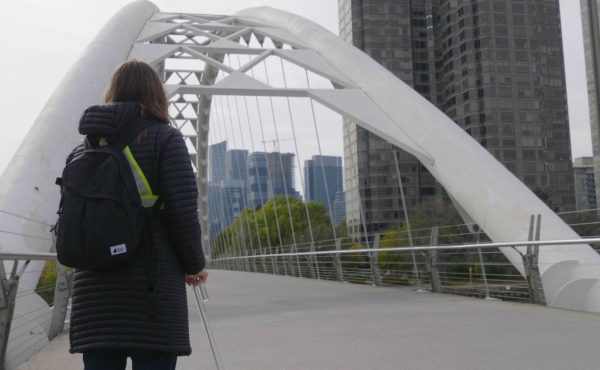The city’s built form does not easily lend itself to habitats suitable many insects and we go to great lengths to keep ourselves and our homes bug free. Yet, insects also connect us with our natural space and its changing tides like the first butterflies of spring. Those same butterflies also connect us with countries far afield through migrations that no free trade deal could rival. I was interested in insects in the city and our relationship to them. Butterflies seemed like a great place to start that conversation since they are so visible and loved (monarchs) or disliked (Cabbage Whites leave garden greens in tatters).
I had a chance to chat with Bob Yukich, butterfly enthusiast and contributor to “Butterflies of Toronto”, one of a series of booklets produced by the City of Toronto in honour of the Year of Biodiversity (2010), about our winged companions in the city.
According to Bob, the Toronto Region (a 50km radius from the ROM) is host to 109 species of butterflies, including the occasional rare species is blown off course to takes a rest in our fair city. All insects are sensitive to changes in climate such as drought, flood or other intrusions on to habitat, though butterflies in particular are the ‘canary in the coal mine’. New species can arrive Toronto through trade, say in a food shipment that had butterfly larvae, may shift because of climate changes or they follow a host plant that gets planted or spreads further afield. Silvery Blue butterflies’ host plant is crown vetch which often gets planted on the side of highways and by default gets spread further and further along the highway. This relocation is not a problem if a foreign butterflies’ host plant is not already host to a native butterfly; if it is it can drive native species out. These new species often explode in number until parasites or predators find it and stabilize the population.
It is not just other butterflies that can cause harm – invasive species such as dog-strangling vine can choke out entire areas killing plants that butterflies and other insects depend on. Though butterflies produce hundreds of eggs its numbers are kept in check by predators such as parasitic wasps and other predators.
Butterflies also face pressure from development in roosting areas. Monarchs’ winter range is in the mountains of Mexico, but those areas are under pressure from illegal logging. More than that, in the southern states milk weed (the Monarchs host plant) that grows among round-up ready resistant and genetically modified corn and soy beans are killed by the herbicide. These factors in addition to climate changes and other habitat changes are reducing the populations of monarchs. It amazes me that activities thousands of kilometres away affect our own natural spaces. It further confirms how important it is to recognise our treatment of the environment can have detrimental effects we are not aware of in areas area of the world.
After Bob and I chatted about the challenges facing butterflies I asked what we could do to support butterfly populations. He emphatically said that turf grass needs to be replaced with native plant species. Challenging ourselves to remove lawn monocultures to help support biodiversity in the city not only makes a healthier city but also more interesting streetscapes. Be sure to include simple-pedaled flowers – anything like a rose is not accessible for butterflies because of the multiple levels of petals. In city development, leaving some meadows with wild flowers is a great idea. While trees are essential (as per my last post) creating different spaces that serve different populations also makes a big difference. And as always, talk to your councillor about supporting biodiversity in the city.
But you may ask why change your lawn, plant native species and talk to your councillor about insects? Because they are important not just for the beauty they bring to a city but also because they are, like us, part of a larger whole. We are connected as much to the butterflies as we are to each other. If we lose species or drive others to new locations because the climate becomes inhospitable we will likely see those repercussions in ways that we will not be able to fix. There’s a reason they call it the butterfly effect.
For further reading see:
www.highparknature.org/wiki/wiki.php?n=Insects.ButterfliesAndMoths
Photos by Bob Yukich






3 comments
I’ve been reading the mag/blog since their inception and I found this article one of the most interesting. Great job Jessica/Spacing for highlighting the fleeting moments of joy that make living in Toronto fun.
Thanks for this post, I like butterflies but cant see them in my town now a days..
It would really help if the City of Toronto would recognize that native biodiversity matters and stop persecuting homeowners who want to grow native plant species. Meadow plants that attract butterflies, bees and other pollinators are usually tall; taller than 20 cm. City of Toronto, Municipal Code Chapter 489 forces gardeners to defend their decision to garden sustainably. It’s about time for Toronto to “grow up” and turf the turf!